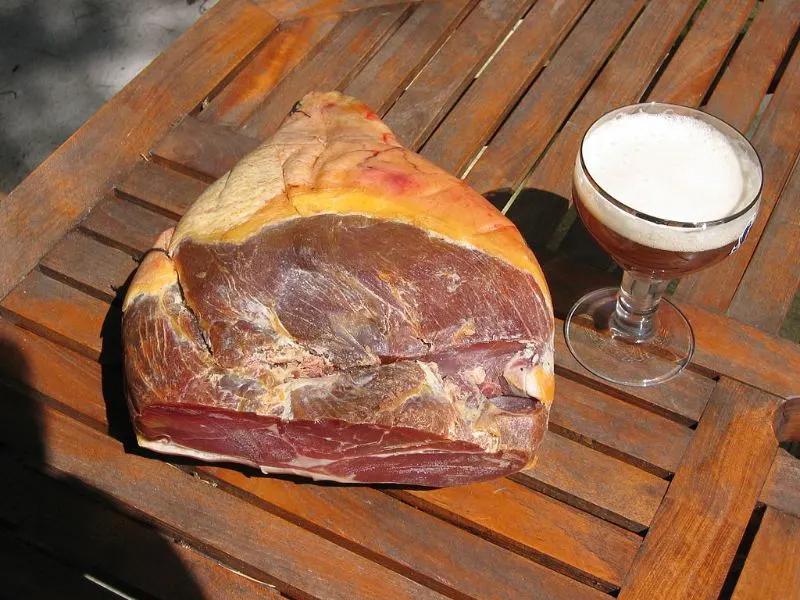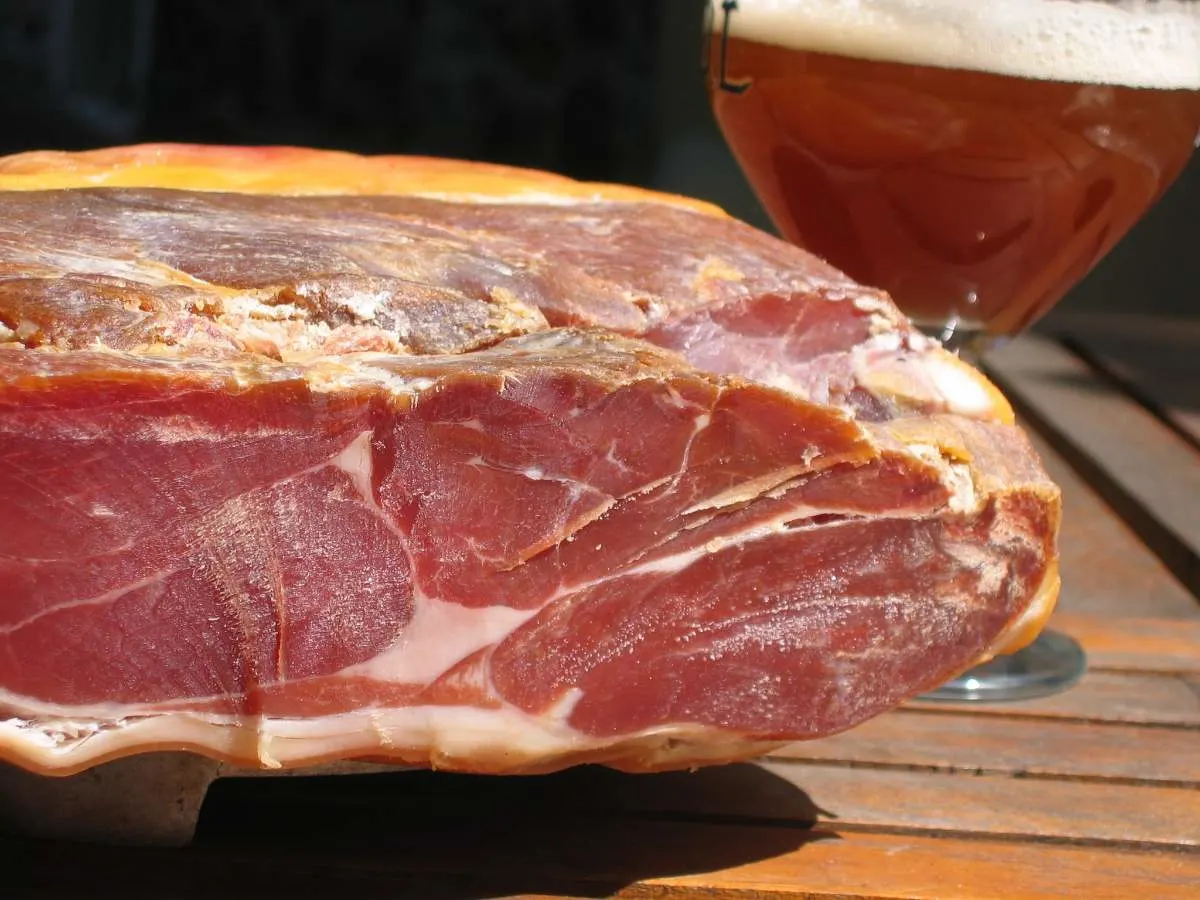Jambon d’Ardenne or Ardennes ham is a type of cured meat made in the various Wallonian regions of Luxembourg, Liege and Namur (both in Belgium). Jambon d’Ardenne is most closely associated with Belgian cuisine.
In order to prepare Jambon d’Ardenne, the ham is dry-salted first and left to rest for 14 days before being immersed into brine. Immersion of ham into the brine allows the ham to absorb all the flavors of a traditional blend of spices which include thyme, laurel, juniper berries and cloves.
The hams generally take seven to eight months to dry out at room temperature. Once the salting is done and the flavors are all soaked in, the ham is then slow smoked over oak sawdust or beech or any other wood other than recycled wood or the one produced from coniferous trees. Although this step is totally optional but it is recommended as it helps to enhance the taste of the ham a lot more.
The Ardenne’s natural environment and the product type play an important role in making of this Belgium delicacy.Sold in a variety of cuts, Jambon d’Ardenne is thoroughly enjoyed throughout Belgium. Ham’s smallest muscle (which is also its leanest cut) is called Noix de Jambon d’Ardenne. Coeur d’Ardenne (also called Fleur d’Ardenne)is the boneless centre cut which is sold at a really high price.
Jambon d’Ardenne is considered to be a key ingredient that is used in the making of traditional Belgian pancakes and omelettes. The ham is generally served with bread, raw vegetables and fruits (generally melon).
Historical & Cultural Significance

Since the early Middle Ages, the Ardennes pigs were bred in the hills and forests on determined routes but then they were largely exported to France. At a time when there was no existence of modern refrigerators and pigs were the only source of meat, curing the meat was the only way to preserve it.
Ham (also known as pork leg cut) was served at various local festivities (as it is considered to be the best part of the pig). The ham being the common speciality was often consumed as snack, and was also served to travellers throughout Ardennes in the beginning of the 19th century.
It was in 1974 that Jambon d’Ardenne got its legal recognition in Belgium by the Belgian Royal Decree. It states that the ham should be salted, matured and smoked (if preferred) in Ardennes itself.
It further mentions that the ham should be prepared as per the traditional method, which purely depends on the Ardennes’s natural conditions. The Ardennes’s natural humidity, temperature, and the flow of fresh, humid air are key elements that make the drying and maturing of the ham happen. Later, in 1996, Jambon d’Ardenne also achieved European PGI status.
As far as the production of Jambon d’Ardenne is concerned, it is interesting to note that it reached 1,600 tonnes in 2002 from 1,036 tonnes in 1997. This was more than 50% of what was actually planned to export.
Photo credit: HenriDavel

